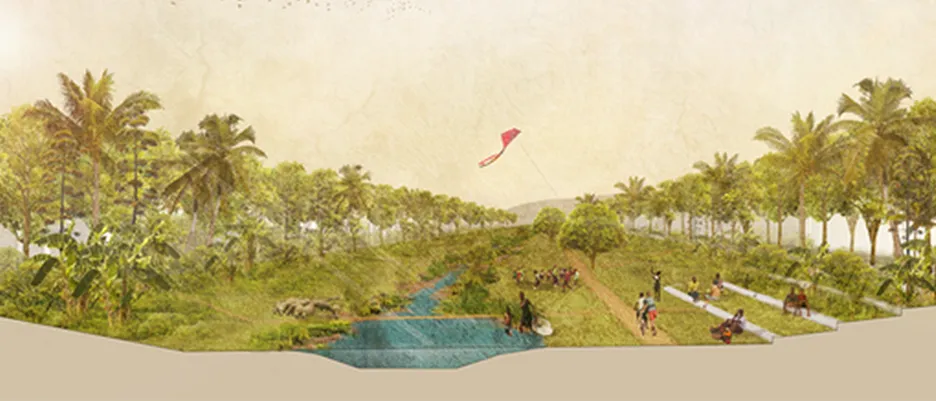[Translate to en:] Terra Nova Ayiti
Landscapes between Urbanization and Agriculture
Master's Thesis M.A. Landscape Architecture, Florian Strauß
Topic
The paper identifies ways to introduce and design landscape infrastructures - towards a resilient framework for any conceivable development - in the plain in a processual manner. Using the proposed landscape infrastructure elements, which are proven, sound, and easy to implement, a way is shown to transform the Cul-de-Sac plain, with or without a city, into a functioning, safe, and highly productive landscape. In the process, the irrigation strips are either lifelines of an agricultural use or they become urban waterfront meeting spaces where housewives can do laundry, children can play, and recreationists can rest in the shade of trees.
The open spaces can accommodate utility infrastructure, such as water and power lines or wind turbines for electricity production. The canals - also lifelines of the new city - look the same nowhere, yet perform the same everywhere. They filter settlement graywater, provide safety in the event of a flood, fertile cropland for urban agriculture, or open space for sports and play. The former biodrainage strips can become important traffic axes in the city, boulevards in whose shade food is hawked at street markets and which leave room for Metrobus and tap-tap lanes, for example. Or they can divide a rural Cul-de-Sac plain, which will once again become the highly productive granary of Port-au-Prince, and which, with its exotic habitats on riverbanks and the coast, as well as a high recreational value, will become an attraction for tourists.
Supervision
Prof. Regine Keller, Dipl.-Ing. Thomas Hauck, Prof. Christian Werthmann (GSD Harvard)
A viewing copy of the master thesis is available by appointment at the chair as well as at the Weihenstephan branch library.
